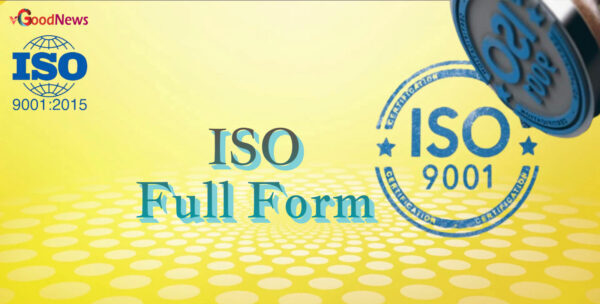ISO Full Form: ISO, which stands for the International Organization for Standardization, serves as the world’s leading developer of voluntary international standards. Distinguished by its non-profit nature and absence of a centralized voting system for new standards, ISO boasts a diverse membership comprising individuals and organizations from across the globe. Here’s an overview of ISO’s functions and its significance in various sectors:
Full Form of ISO: ISO Full Form
When a national standard is adopted into the ISO framework, it assumes the status of an ISO standard, thereby replacing the original national standard. Countries can acquire ISO or national standards from other nations through voluntary adoption. ISO’s full form denotes the International Standard, symbolizing the global recognition and adoption of standardized practices across borders. ISO Full Form
ISO Full Form: The History of ISO:
ISO traces its origins to July 1944, emerging from the Second International Conference on Phonograms with the mission to standardize audio and related products. Established as a committee, ISO quickly garnered international support, with 15 countries signing agreements within a year. Initially focused on phonogram regulations, ISO expanded its scope to encompass a wide range of industries and sectors.
What ISO Stands For: ISO Full Form
ISO, or the International Organization for Standardization, was founded in 1940 under the Treaty on the Organization of the Regulations for International Standards. Its primary objective is to develop and uphold international standards while facilitating the exchange of technical information among member countries. Headquartered in Geneva, ISO strives to promote uniformity and quality across global industries. ISO Full Form
ISO Standards: ISO Full Form
ISO boasts an extensive catalog of over 200 international standards, covering diverse fields and sectors. These standards serve as benchmarks for quality, safety, and efficiency, enabling organizations to streamline processes and enhance interoperability on a global scale.
Benefits of ISO Membership:
Membership in ISO offers numerous advantages, including access to a network of professionals with proven expertise and experience. Members benefit from favorable conditions for mutual recognition of ISO and national standards, fostering seamless trade and industry practices worldwide. ISO’s global reach ensures that members can offer their services to any country without concerns about varying standards. ISO Full Form
Conclusion:
In an increasingly interconnected world, ISO (ISO Full Form) plays a pivotal role in establishing and upholding international standards. For professionals seeking employment opportunities, particularly within multinational firms, possessing specialized skills and expertise is essential. Conducting thorough research and aligning one’s qualifications with the requirements of international organizations are vital steps toward securing rewarding career opportunities in the global marketplace.
FAQs about ISO Full Form
What does ISO stand for?
ISO stands for the International Organization for Standardization, which is the world’s largest developer of voluntary international standards.
How was ISO established?
ISO was established in 1940 under the Treaty on the Organization of the Regulations for International Standards, with Germany creating the first ISO standard.
How are ISO standards developed?
ISO standards are developed through a collaborative process involving experts and stakeholders from various countries and industries, aiming to promote uniformity and quality across global sectors.
What are the benefits of ISO membership?
ISO membership offers advantages such as access to a network of professionals, favorable conditions for mutual recognition of standards, and opportunities to contribute to global industry practices.
What is the significance of ISO standards?
ISO standards serve as benchmarks for quality, safety, and efficiency in diverse fields, facilitating trade, enhancing interoperability, and promoting global best practices.

